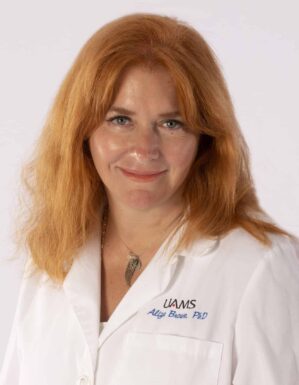
Since 2006, my research has heavily focused on stroke, encompassing the pre-clinical and clinical examination of new neuroprotectives and thrombolytics. However, to determine the feasibility of clinical implementation of our new therapies, I began broadening my focus in 2014 to include stroke population research across Arkansas. This research led to my participation in the Institute for Digital Health’s Stroke Telemedicine Program and the Arkansas Department of Health’s population health research on strokes, which is part of the American Heart Association’s Get-With-The-Guidelines program. Most recently, I also assisted with data analysis for the UAMS Department of Neurology’s stroke section. My efforts in these areas led to multiple publications, grant funding and 100% funding of my salary.
Thus far, I know of two instances in which my research studies on paramedic stroke education saved a life. My funded study on paramedic video education on pre-hospital stroke care and procedures for hospital diversion prompted two paramedics to deliver their stroke patients to stroke-qualified hospitals. The ability to impact lives directly is a phenomenal achievement for a biomedical researcher. Other noteworthy projects include data analysis across the state to improve emergency services and pre-hospital care of all stroke patients. This effort led to my participation on the governor-appointed Arkansas Acute Stroke Care Stroke Task Force Committee of which I recently was appointed Chair.
Further research funded by the Center for Translational Neurosciences led to my design and publication of two mobile phone apps, WeTrain911, for training rural dispatchers on basic medical knowledge and iClick911 to improve the accuracy of location notification to emergency medical services. I determined that Arkansas’s emergency 911 response in the poor Delta counties had connection problems and/or poor response times. Both apps were designed to improve public health and reduce mortality due to poor emergency response. Although both apps have since closed, I am still dedicated to this area of research.
In summary, I have contributed importantly to funded studies at UAMS that span translational and clinical research, for example, from using animal models of stroke and vascular disease, to the search for new therapies, to (most recently) helping to lead stroke initiatives in Arkansas’ communities to lower stroke mortality in the state.
